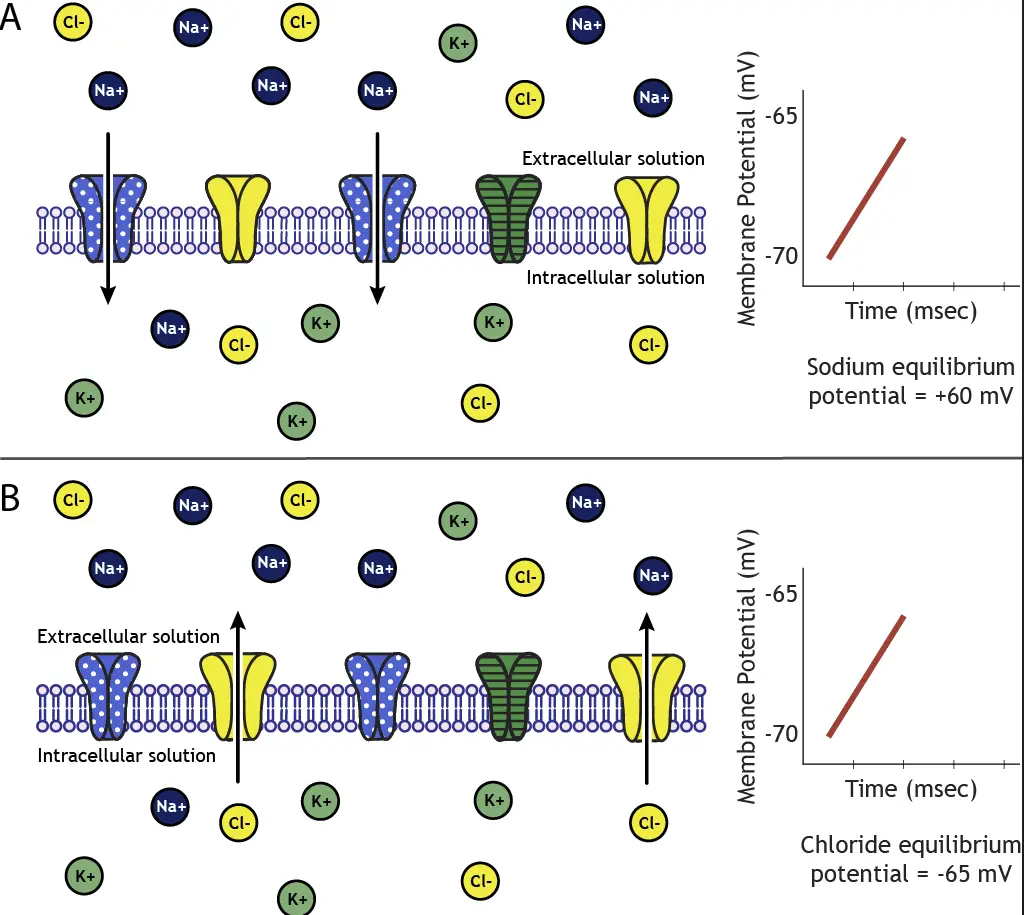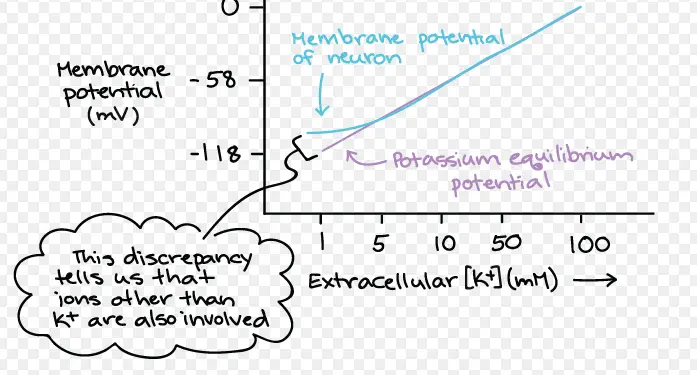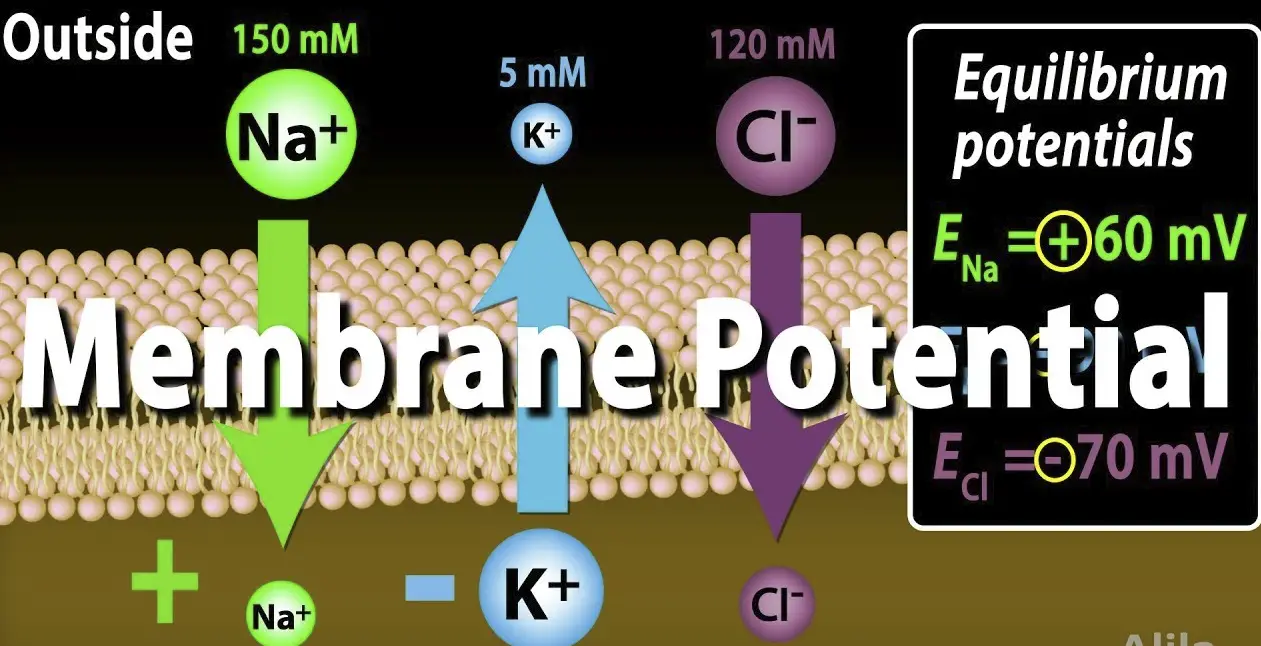Membrane potential and equilibrium potential are foundational concepts in the study of cellular physiology, particularly within the context of nerve and muscle function. These two types of electrical potentials play crucial roles in how cells communicate and function. Each type has distinct characteristics and functions, which are essential for maintaining the life processes of cells.
The membrane potential represents the electrical potential difference across a cell’s membrane, resulting from the uneven distribution of ions. In contrast, the equilibrium potential is the electrical potential difference that exactly balances an ion concentration gradient across the membrane, preventing net movement of that particular ion. Understanding the interplay between these potentials is key to grasping how cells generate electrical signals.
These concepts not only explain basic cellular functions but also provide insights into more complex physiological responses and diseases. Exploring these potentials helps to uncover how disruptions in ion balances can lead to significant health issues, such as cardiac arrhythmias and neurological disorders.

Membrane Potential Defined
Basic Concept
The membrane potential is a vital concept in cellular biology, referring to the electrical voltage difference across a cell’s membrane. This difference is crucial for the functioning of cells, especially in nerve and muscle tissues. Essentially, membrane potential arises from the difference in ion concentrations between the inside and outside of a cell, leading to a net electric charge.
Formation Mechanisms
The formation of membrane potential is primarily due to ion pumps and ion channels within the cell membrane. These structures help maintain different concentrations of ions, such as sodium (Na+), potassium (K+), chloride (Cl-), and calcium (Ca2+), on opposite sides of the membrane. The most significant contributor is the sodium-potassium pump, which actively transports K+ ions into and Na+ ions out of the cell, using energy from ATP.
Components Influencing Membrane Potential
Ionic Concentration
The concentration of ions on either side of the cell membrane is the fundamental factor influencing membrane potential. For example, typically, K+ ions are more concentrated inside the cell, while Na+ ions are more abundant outside. This uneven distribution creates an electrochemical gradient across the membrane.
Membrane Permeability
The permeability of the cell membrane to different ions also affects the membrane potential. Each type of ion channel in the membrane has varying selectivity and permeability for specific ions, which can change in response to various signals or conditions, altering the membrane potential accordingly.

Equilibrium Potential Explained
Definition and Role
Equilibrium potential refers to the electrical potential difference that precisely balances the concentration gradient of a specific ion across a membrane, preventing its net movement. This potential is crucial for determining the resting and action potentials in cells, influencing how signals are generated and transmitted in nervous and muscle systems.
Nernst Equation
The Nernst equation is fundamental in calculating the equilibrium potential for any ion. It considers the temperature, the ion’s charge, and the ratio of its external and internal concentrations. The equation is given by:
𝐸𝑖𝑜𝑛=𝑅𝑇𝑧𝐹ln([𝑖𝑜𝑛]𝑜𝑢𝑡𝑠𝑖𝑑𝑒[𝑖𝑜𝑛]𝑖𝑛𝑠𝑖𝑑𝑒)Eion=zFRTln([ion]inside[ion]outside)
where 𝐸𝑖𝑜𝑛Eion is the equilibrium potential for the ion, 𝑅R is the gas constant, 𝑇T is the absolute temperature, 𝑧z is the charge number of the ion, 𝐹F is Faraday’s constant, and [𝑖𝑜𝑛]𝑜𝑢𝑡𝑠𝑖𝑑𝑒[ion]outside and [𝑖𝑜𝑛]𝑖𝑛𝑠𝑖𝑑𝑒[ion]inside are the concentrations of the ion outside and inside the cell, respectively.
Factors Determining Equilibrium Potential
Key Ions Involved
The most crucial ions in determining equilibrium potentials are potassium (K+), sodium (Na+), chloride (Cl-), and calcium (Ca2+). Each of these ions has a specific role and contributes differently to the membrane potential depending on their concentration gradients and membrane permeabilities.
Calculating Examples
Let’s calculate the equilibrium potentials for K+ and Na+ using the Nernst equation, assuming body temperature (37°C, or 310 K):
- For Potassium (K+):
- Assume [𝐾+]𝑖𝑛𝑠𝑖𝑑𝑒=140 mM[K+]inside=140 mM and [𝐾+]𝑜𝑢𝑡𝑠𝑖𝑑𝑒=4 mM[K+]outside=4 mM
- The equilibrium potential 𝐸𝐾+EK+ calculates as follows:
𝐸𝐾+=60 mV1ln(4140)≈−89 mVEK+=160 mVln(1404)≈−89 mV
- For Sodium (Na+):
- Assume [𝑁𝑎+]𝑖𝑛𝑠𝑖𝑑𝑒=12 mM[Na+]inside=12 mM and [𝑁𝑎+]𝑜𝑢𝑡𝑠𝑖𝑑𝑒=145 mM[Na+]outside=145 mM
- The equilibrium potential 𝐸𝑁𝑎+ENa+ calculates as:
𝐸𝑁𝑎+=60 mV1ln(14512)≈+66 mVENa+=160 mVln(12145)≈+66 mV

Comparing Membrane and Equilibrium Potential
Fundamental Differences
The key distinction between membrane potential and equilibrium potential lies in their basis of formation and function within cellular systems. Membrane potential is generally influenced by multiple ions and results from the active transport and differential permeability of the cell membrane. It represents the overall voltage across the cell’s membrane under various physiological conditions. In contrast, equilibrium potential refers to the voltage at which the net flow of a specific ion across the membrane ceases, considering only one type of ion at a time.
Interdependence and Interaction
Despite their differences, membrane and equilibrium potentials are not mutually exclusive; they interact dynamically within the cell. The equilibrium potential can influence the overall membrane potential, especially when the permeability of the membrane to a specific ion increases. For instance, during the action potential of a neuron, the increase in sodium permeability shifts the membrane potential closer to the sodium equilibrium potential.
Role in Neuronal Activity
Action Potentials
Action potentials are rapid rises and falls in membrane potential that occur when neurons send signals along their axons. They begin when the membrane potential reaches a certain threshold, primarily due to the influx of Na+ ions, which temporarily brings the membrane potential close to the Na+ equilibrium potential.
Signal Transmission
The generation of action potentials is fundamental for signal transmission in neurons. As the action potential travels along the neuron, it causes localized changes in the membrane potential, facilitating the transmission of information across long distances within the nervous system.
Implications in Health and Disease
Normal Physiological Conditions
Under normal conditions, the precise control of membrane and equilibrium potentials is essential for the proper function of cells, particularly in the nervous and cardiovascular systems. These potentials allow for the regulation of heartbeats and the processing of sensory and motor information in the brain.
Pathological Variations
Alterations in membrane or equilibrium potentials can lead to various diseases. For example, hyperkalemia (high potassium levels) can significantly alter the membrane potential, making neurons and muscle cells more excitable and leading to complications such as cardiac arrest.
Case Studies
Neuronal Disorders
In conditions like epilepsy, abnormal neuronal activity caused by disrupted membrane potentials leads to seizures. Understanding the roles of membrane and equilibrium potentials in such conditions helps in developing targeted treatments that restore normal ion balance across neuronal membranes.
Cardiovascular Implications
In the heart, changes in ion concentrations and membrane permeability can affect the membrane potential, leading to arrhythmias. For instance, an increase in extracellular potassium lowers the resting membrane potential and can slow down or even stop the heart.
Advances in Research
Recent Studies and Findings
Recent research has focused on the molecular mechanisms that control ion channels and pumps, with implications for diseases like diabetes and cystic fibrosis. Studies have shown how mutations affecting ion channels can disrupt membrane potentials and lead to disease states.
Future Directions
Looking ahead, research aims to develop more precise treatments that target specific changes in membrane and equilibrium potentials. This includes the development of drugs that can more selectively influence ion channel activity, potentially offering more effective management of conditions like hypertension and chronic pain.
Frequently Asked Questions
What is Membrane Potential?
Membrane potential is the voltage difference between the interior and exterior of a cell, primarily caused by the differential distribution of ions across the cell membrane. This electrical potential plays a critical role in cellular activities like muscle contraction and nerve impulse transmission.
How is Equilibrium Potential Calculated?
Equilibrium potential can be calculated using the Nernst equation, which considers the temperature, charge of the ion, and the concentration gradients of ions across the membrane. It predicts the voltage required to balance the ionic fluxes, maintaining a stable environment inside the cell.
Why are These Potentials Important?
Membrane and equilibrium potentials are vital for the proper functioning of cells, particularly in the nervous and muscular systems. They enable the transmission of signals across neurons and the initiation of muscle contractions, essential for movement and sensation.
Can These Potentials Change?
Yes, both potentials can change in response to alterations in ion concentration inside and outside the cell. This dynamism is crucial for the functionality of many physiological processes, such as the propagation of action potentials in neurons.
Conclusion
Membrane and equilibrium potentials are more than just concepts in cellular biology; they are integral to the normal operation of every cell in the body. Their precise regulation ensures that vital functions, such as heartbeats and reflex actions, proceed without disruption. Understanding these potentials not only sheds light on basic biological processes but also aids in diagnosing and treating various diseases.
These insights into cellular electrical properties underscore the complexity and elegance of life at the molecular level. As research progresses, the deeper understanding of these potentials will likely unveil new therapeutic targets and strategies, enhancing our ability to manage and treat a wide range of physiological disorders.

